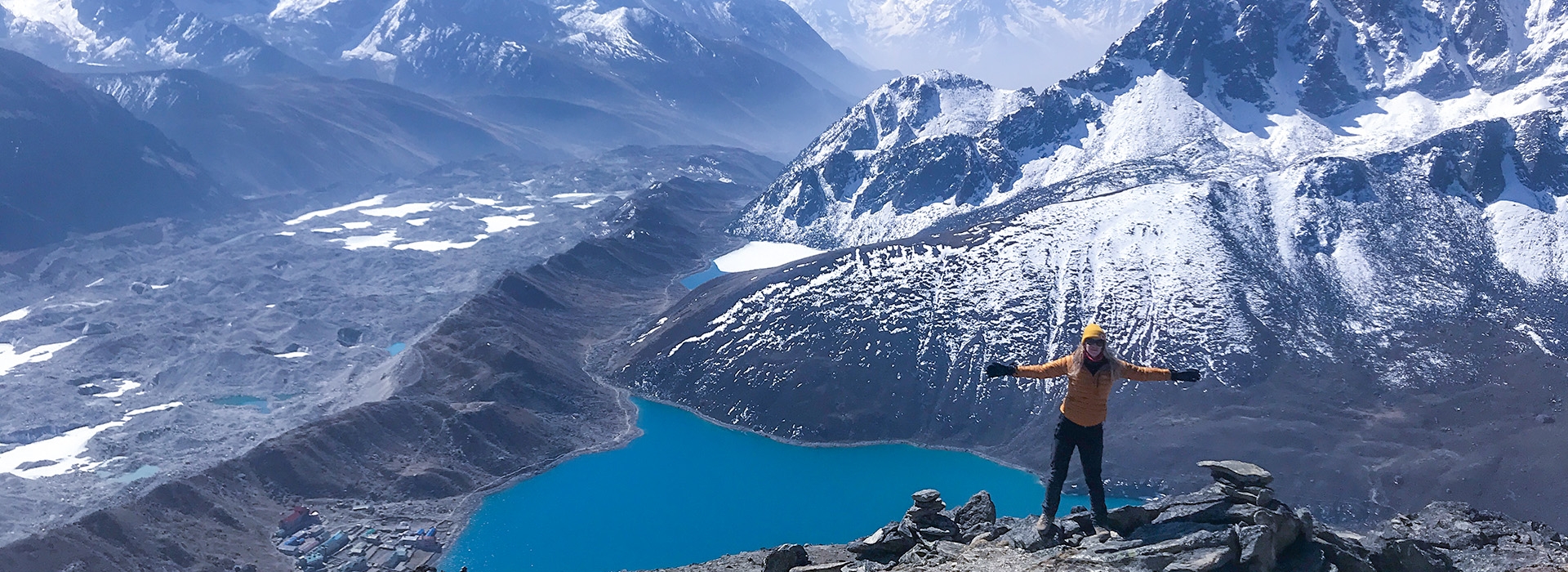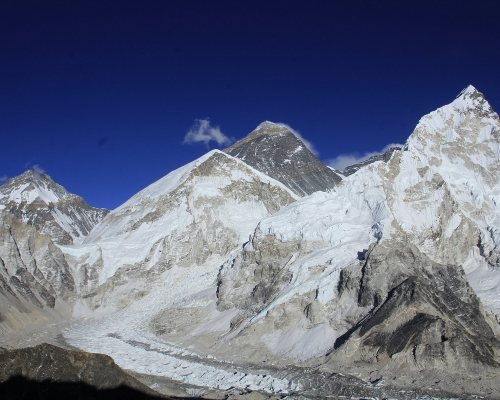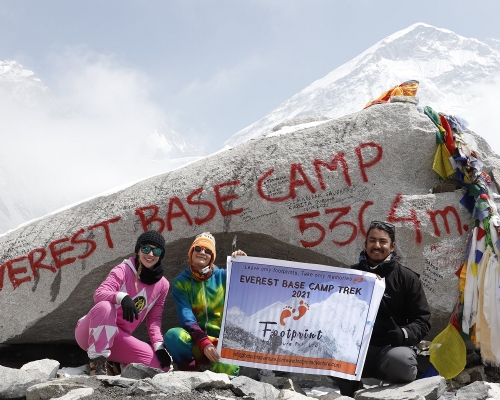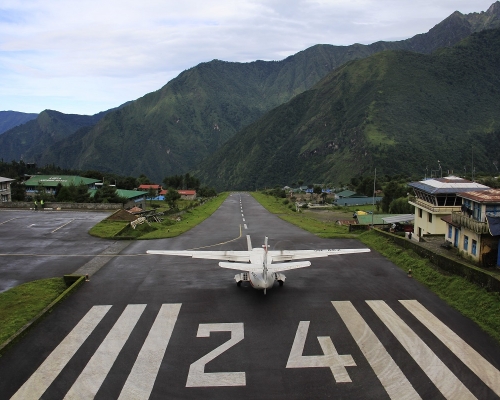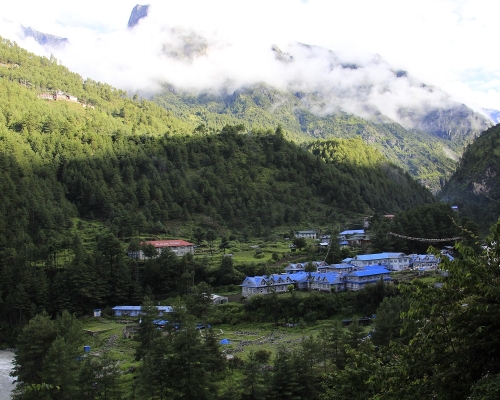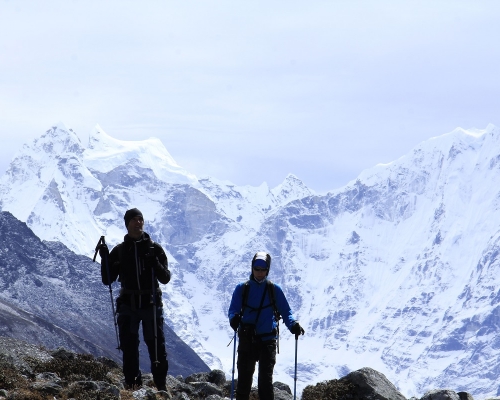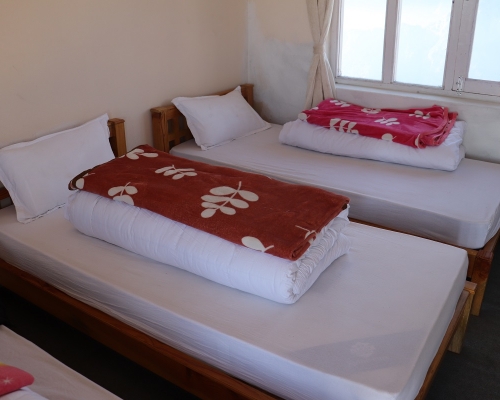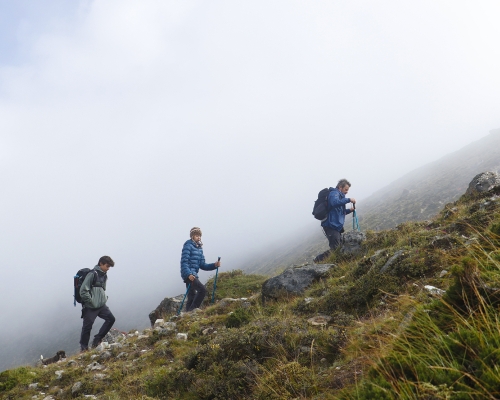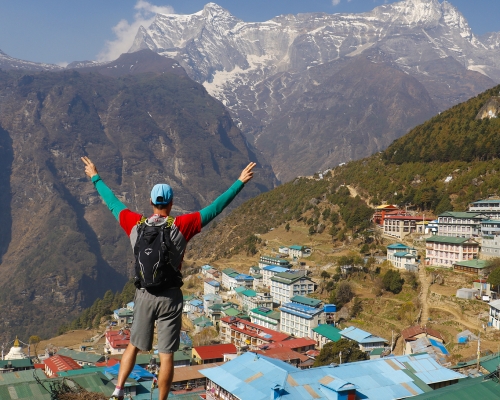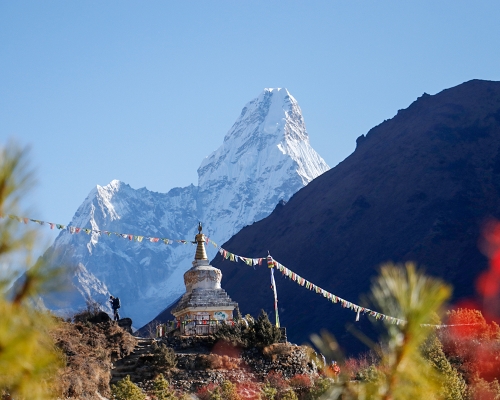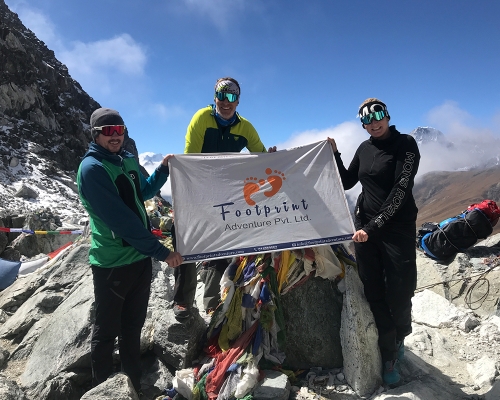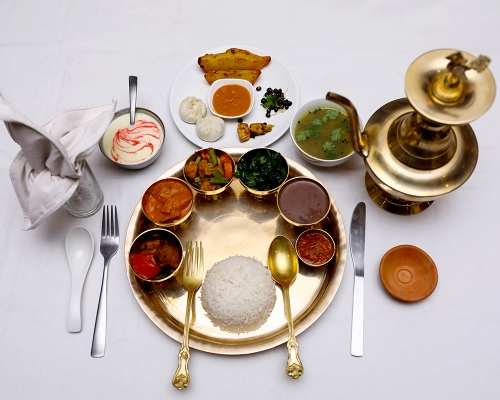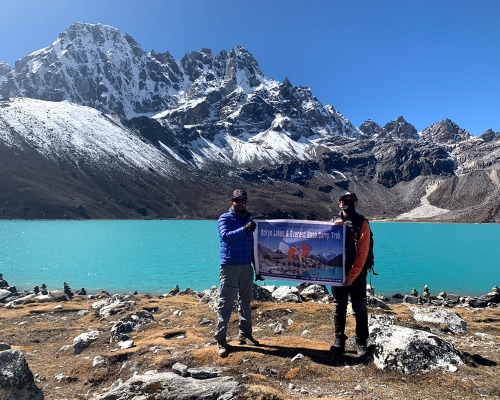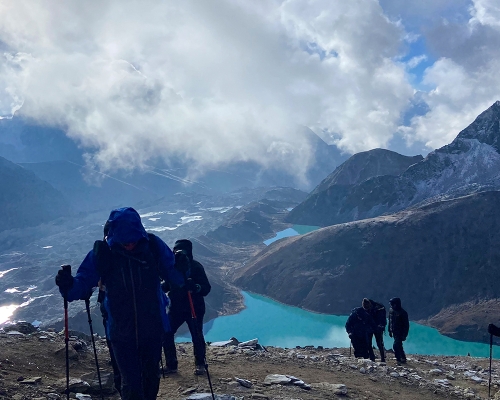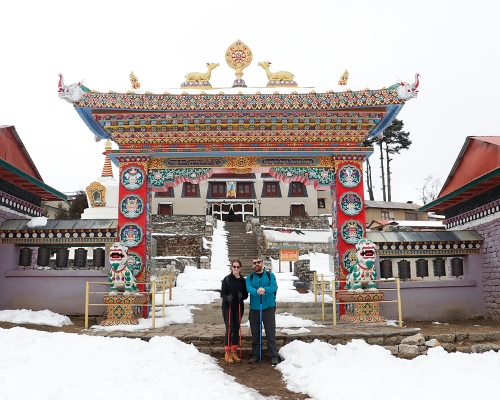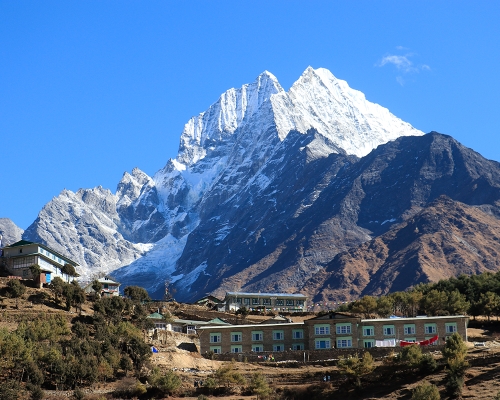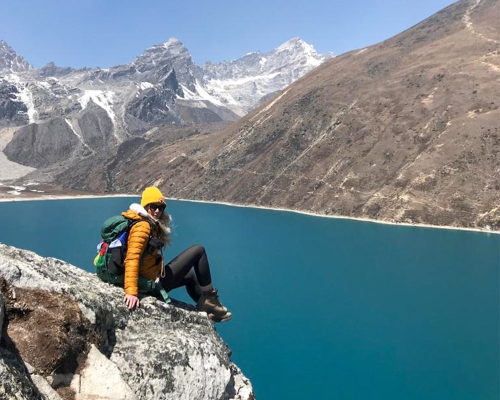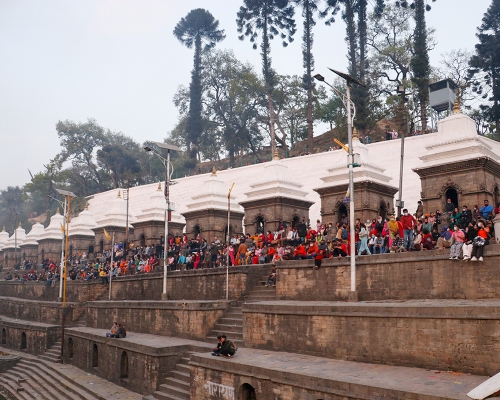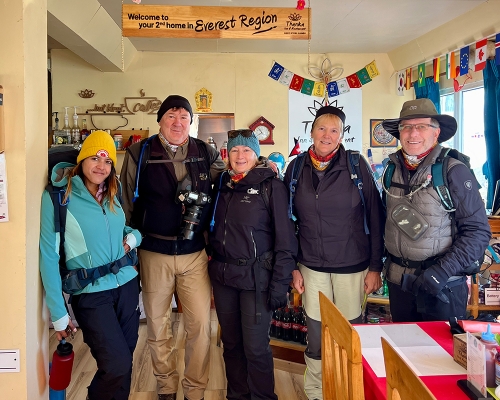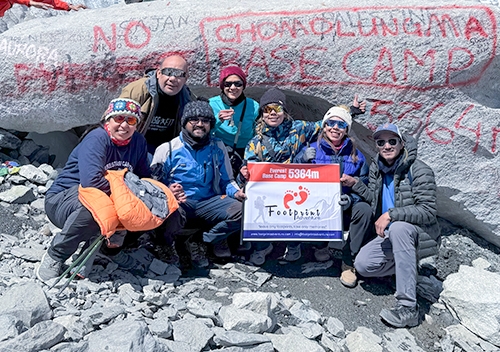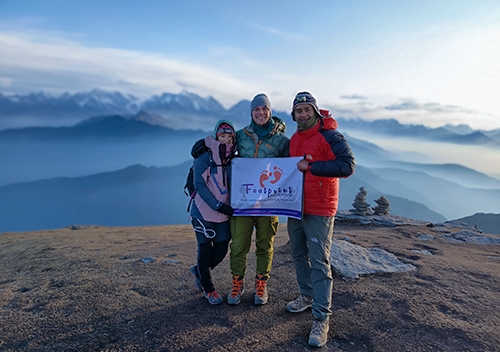The Everest Chola Pass and Gokyo Lakes Trek takes you from remote, low-altitude places to Gokyo Valley. Along the way, you'll have to cross High mountain passes like Gokyo Ri (5,357 m), Cho La Pass (5,420 m), Kala Pattar (5,545 m), Amadabalm (6856 m) which are not technically difficult as they pass through well-developed trekking trails, but all these trails climb up above 5,000 m, alongside glaciated lakes, glaciers, rocky and sloppy hills, and boulders filled with snow, so acclimatization is essential. This is an incredible trip for exploring the soaring Himalayas in the Everest Region. The trail also goes through remote villages and passes through high, rocky, and snowy peaks. Here is The Complete Guidebook for the Gokyo Lake Trek.
You will first take a brief sightseeing tour of the Kathmandu Valley before taking a scenic, short flight to Lukla Airport, where you will continue your trek to Namche Bazaar, Dole Village, and Machermo. From there, you will enter the Gokyo Valley and climb to Gokyo Ri to sneak around the magnificent Himalayas. You will eventually reach Everest Base Camp after a trip from Gokyo to Tangnak, Lobuche, and Gorakshep. After exploring the area, you will retrace your steps back to Gokyo, hike to Kalapathar viewpoint, descend to Namche Bazaar via Pheriche, and then fly back to Kathmandu from Luka. Visit our blog section to learn more about the comprehensive guidebook for the Everest Circuit trek. During the tour, you will not only cross high mountain passes but also see the picturesque Sherpa settlements, learn about their rituals and lives, sample local dishes and delicacies, and visit Buddhist monasteries and unique flora and fauna. If you're lucky, you'll see wild creatures and endangered species, giving you fantastic photo opportunities. These elements make the Everest Chola Circuit trek gratifying and a once-in-a-lifetime experience.
Major highlights of the Gokyo Lakes & Everest Base Camp Trek
Namche Bazar
Namche Bazaar (3,440 m) is a popular Sherpa hamlet on Everest. It is a popular resting stop (acclimatization location) for Everest Region trekkers. The location is shaped like a horseshoe and is bordered by Kongde Ri, Thamserku, Kusum Khangaru, and more. Namche Bazaar has luxury hotels, lodges, three museums, a stupa, a monastery, cafes, bakeries, trekking gear shops, banks, and stores. Almost all trekkers, climbers, and hikers spend at least two additional nights in Namche before ascending the Highlands. Namche Bazaar, which is also a well-known Sherpa town, is known for its coffee and French bakeries.
Kalapatthar Viewpoint
Kalapatthar is a prominent viewpoint in Nepal because it's part of the Everest Base Camp Trek. Kalapatthar is a black-stoned mountaintop above Gorakshep on Pumori's southern crest. Kalapatthar gives close-up views of Everest, Lhotse, Nuptse, Pumori, and other snowy peaks. This unusual vantage point is 5,545 m upland from Gorakshep village.
Gokyo Lakes
The Gokyo Lake is the highest freshwater lake system in the world, at a maximum altitude of 5,357 m. Gokyo Lake is one of the most popular tourist attractions on the way to Everest Base Camp and other regions. At 4,790 m (15,720 ft) elevation, Gokyo village is one of the area's principal centers. Climbing Gokyo Ri is frequently included in trips to the region. And if you need more proof that this place is beautiful and essential, Footprint Adventure says, "The Gokyo Valley is, in our opinion, the most beautiful place in the Khumbu." Ngozumoa Glacier is another highlight of the Gokyo region. It is the longest glacier in the Himalayas, stretching 36 kilometers (22 miles) beneath Cho Oyu, the world's sixth-highest mountain.
Highlights of the Gokyo and Everest Base Camp Trek
- UNESCO World Heritage Site excursion in Kathmandu Valley
- A scenic and dramatic flight to the world's most dangerous airport—Lukla Airport
- Trekking through the alpine forest, Sherpa settlements, and majestic valleys in Sagarmatha National Park
- Exploring Tibetan Buddhism and its correspondence while trekking from Lukla to base camp
- Experience Sherpa culture, tradition, and practices with your own eyes
- Get a chance to encounter the exotic flora and fauna in Sagarmatha National Park
- Experience the view of the base of the world's highest mountain and its surroundings
Best seasons for Gokyo Lake & Everest Base Camp Trek
The months of spring (March-May) and fall (October–November) are the best times to trek to Gokyo Lake and Everest Base Camp because the weather is more pleasant and ideal for high-altitude trekking. During these times of the year, you can see the mountains with no clouds in the way. Although it is possible to complete this hike during February and early September, the optimum time to complete the hike is during the months listed above.
Fitness for Gokyo Lakes & Everest Base Camp Trek
You need months to prepare for this trek. To increase the effectiveness of your cardio workout, start with a brisk walk and go on to jogging. 5 km in 30 minutes should be your target. Start gradually and increase daily. Swimming, riding, and stair climbing help too. You must walk on uneven terrain while on the trek. Leg strength is a plus during this trek. Leg exercises like weightlifting and squats might help.
Difficulty of the Gokyo Lakes & Everest Base Camp Trek
In general, the altitude, terrain, and length of time it takes to complete a trek can tell you how hard it is. The Everest Base Camp and Gokyo Lake Trek is a high-altitude trek that takes place over the course of several days and involves walking on an uneven area of the earth. Because of this, it is very hard and requires both a high level of physical fitness and the ability to keep going.
The adventure eventually brings you to the base of the world's highest summit, Everest, and allows you the greatest possibility of exploring the mountain. This trek is one of the most popular and in demand by Footprint Adventure. Read more about the complete guidebook for the Everest Circuit trek in our blog section, and for further information, contact us.

